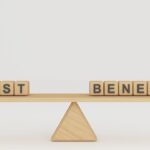- Everything you need to know about the change coming in 2026 thanks to the SECURE Act 2.0
- The good, the bad, and the ugly – we take a look at the pros and cons of this change.
- Regardless – contributing to the Roth TSP can provide tax-free growth and withdrawal flexibility.
At the moment, any federal employee can contribute to a Roth TSP account. Although the matched contributions from the government and the employing agency have to be put in the traditional TSP, any or all of employee contributions can go into a Roth TSP. Unlike a Roth IRA, there are zero income restrictions. If you’re able to contribute to the TSP, you can put some of that money into a Roth TSP. Check out this article to learn why that could be a pretty wise move – especially if you’re on the younger side.
Tax Planning for Federal Employees: Webinar featuring Federal Benefits Guru, Ed Zurndorfer!
But if you’re 50 or older, you are able to contribute more than the annual limit, known as “catch-up” contributions ($7500 more in 2024). For feds who make more than $145,000 per year, any catch-up contribution will be required to go into a Roth TSP, starting in 2026. This is due to the SECURE Act 2.0 and was supposed to go into effect this year. However, because this also affects 401ks, and some such retirement plans in the private sector did not have a Roth component and would not have been able to comply with the law in time. So, back in August, the IRS delayed the rule until 2026.
High Wage Earners
The upcoming requirement will apply to individuals who made at least $145,000 gross in wages the prior tax year, all from the same employer. That last part in particular is important to remember. If you work two jobs with two employers, then wages from one won’t combine with the other. Same goes for married folks. For example, if your adjusted gross income (AGI) on a jointly filed tax return is above $145,000, but only $87,000 was from your federal job, then in this case, you wouldn’t have to worry about the requirement the following year for your TSP catch-up contributions. However, for feds who receive more than $145,000 in wages annually from a single federal job, then they would be subject to the new IRS mandate, regardless of their AGI, should they continue to work for the government the next year.
Long-Term Tax Savings
In the near-term, the rule might cause some financial discomfort. Because money contributed into a Roth account is done with after-tax dollars, the tax hit is felt right away. An individual’s tax bracket is determined after traditional TSP contributions have been made, so having to contribute to a Roth might push some into a higher bracket. However, given enough time and a smart investment strategy, the subsequent tax-free growth and withdrawals from Roth accounts in retirement could recover more than what was lost while in service. Similarly, a large traditional IRA or TSP balance in retirement could push some retirees into a higher tax bracket as withdrawals from those accounts are taxed as ordinary income.
Another benefit of Roth TSP and IRA accounts is the ability to withdraw contributions (but not any investment gains) penalty-free at any point – even if you’re younger than 59½. Although this isn’t advisable most of the time (better to keep the money there to grow tax-free), it can be a nice perk should an unexpected emergency expense arise.
---
Until Next Time,

The information has been obtained from sources considered reliable but we do not guarantee that the foregoing material is accurate or complete. Any opinions are those of Serving Those Who Serve writers and not necessarily those of RJFS or Raymond James. Any information is not a complete summary or statement of all available data necessary for making an investment decision and does not constitute a recommendation. Investing involves risk and you may incur a profit or loss regardless of strategy suggested. Every investor’s situation is unique and you should consider your investment goals, risk tolerance, and time horizon before making any investment or financial decision. Prior to making an investment decision, please consult with your financial advisor about your individual situation. While we are familiar with the tax provisions of the issues presented herein, as Financial Advisors of RJFS, we are not qualified to render advice on tax or legal matters. You should discuss tax or legal matters with the appropriate professional. **



